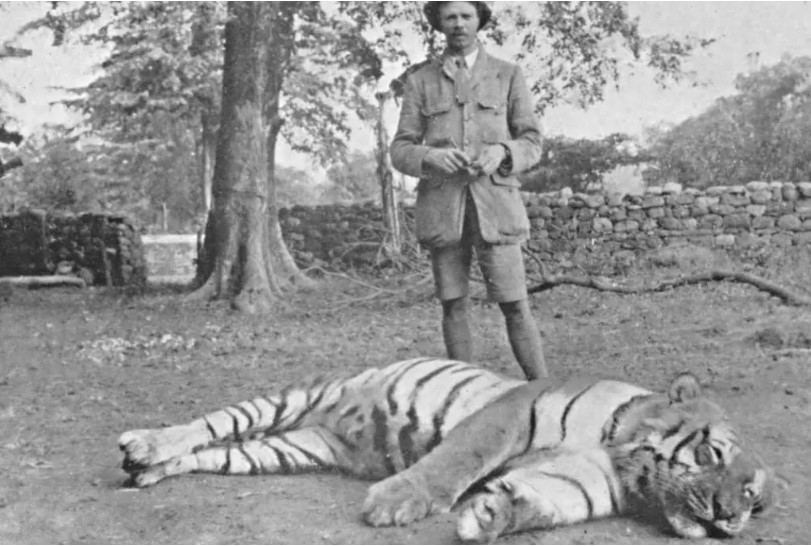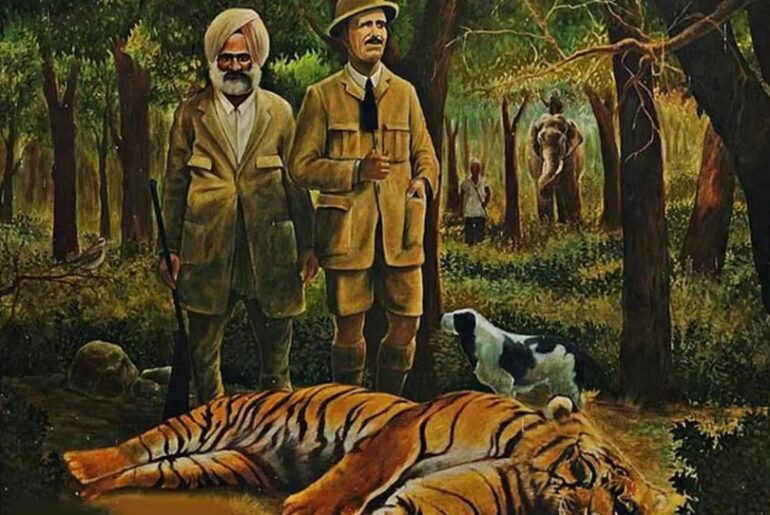The Champawat Tigress: A Deadly Legend of Uttarakhand
In the early 1900s, a Bengal tigress known as the Champawat Tigress became infamous in the Kumaon region of India. For seven long years, this tigress caused fear and panic among the local villagers as she hunted and killed people instead of her usual prey.
The reason behind this terrifying behavior was likely due to an injury or dental problem that made it hard for her to catch her normal food. Desperate for something to eat, she turned to the nearby villages, attacking anyone she could find.
In total, the Champawat Tigress was responsible for the deaths of 436 people, a record that no other animal has ever reached. Because of this, she was even recognized by the Guinness Book of World Records. The villagers lived in constant fear, knowing that the tigress could strike at any moment. Eventually, the situation became so dire that something had to be done to stop her.
The story of the Champawat Tigress is a reminder of how powerful and dangerous wild animals can become, especially when they are in need of food and can’t hunt their usual prey.
In a village nestled deep within the forests of the Himalayan foothills, a group of schoolgirls would often gather under the shade of an old banyan tree during recess. Their favorite stories to tell were about the legendary Champawat Tigress, a tale that had been passed down through generations.
Suggested Read: Modi Trail: A Trek Through Jim Corbett’s Wild Heart

The Champawat Tigress and Nepal
The Champawat Tigress began her reign of terror in the hills of Nepal. At first, her attacks were rare and scattered, but soon they became more frequent and deadly. When she made her first kill, people didn’t think much of it. In those days, the forests were thick and there were only a few villages, so occasional attacks by wild animals were not uncommon.
However, as the tigress’s attacks increased, the local government took notice. By that time, she had already killed around 200 people. Villagers who lived near the forests were terrified, as their lives and livelihoods were at the mercy of this fierce predator. The growing number of deaths caused widespread panic, which hurt local economies and led to hysteria.
The Nepali army was called in to deal with the tigress. The soldiers, familiar with the forests and their wildlife, tried to hunt her down. But the tigress was elusive, managing to escape even expert hunters. Eventually, with help from the villagers, the army managed to drive her towards the Sharda River, which forms the border between India and Nepal. The tigress crossed the river into Indian territory, where she found a new place to continue her attacks.
Once she settled in the Kumaon hills, the Champawat Tigress resumed her killing spree. She targeted many villages with Champawat at the center of her territory. Her strategy was to make her kills far from her previous locations, making it harder for people to track her. Her first attack in India was on a young girl who was cutting grass with other women. The girl was slightly away from the group when the tigress ambushed her and killed her.
Over the years, the Kumaon hills lived in constant fear of the Champawat Tigress. She primarily targeted women and children, as they were easier to overpower. Unlike other tigers and leopards, who usually hunt in the dark, the Champawat Tigress often struck during the day. Having killed so many people, she had lost all fear of humans.

The Impact of the Champawat Tigress on Jim Corbett
The story of the Champawat Tigress is not just a tale of fear and destruction; it also had a profound impact on the life of Jim Corbett, a renowned hunter and later, a dedicated conservationist. When Corbett was called to hunt the Champawat Tigress, it was a task that demanded both skill and bravery. However, the experience left him deeply affected.
After successfully tracking and killing the tigress, Corbett came to a significant realization. He understood the destructive effects of human actions on wildlife and their natural habitats. This hunt was a turning point for Corbett. He began to see the bigger picture, recognizing the need to protect wildlife rather than simply hunting them.
The Champawat Tigress’s story highlighted the challenges of human-wildlife conflict and the urgent need for conservation. Corbett’s experience with the tigress marked a change in his outlook. He moved from being a hunter to becoming a passionate advocate for wildlife preservation.
This transformation led Corbett to play a crucial role in the establishment of India’s first national park, Hailey National Park, which was later renamed Jim Corbett National Park in his honor. His work in creating and protecting this park was instrumental in the conservation of the Bengal tiger and other endangered species.
The legacy of the Champawat Tigress serves as a powerful reminder of the delicate balance between humans and the natural world. It demonstrates how one person’s experience with a wild animal can lead to significant positive change. Corbett’s shift from hunter to conservationist is a testament to the power of empathy and the potential for transformation in the face of adversity.
The tale of the Champawat Tigress continues to inspire and educate, reminding us of the importance of coexisting with and protecting our natural environment.




Comments are closed.